Where To Pet An Elephant ethically is a question many animal lovers ask. PETS.EDU.VN is here to guide you towards genuine elephant encounters, promoting ethical tourism and conservation efforts. Discover sanctuaries where you can connect with these magnificent creatures respectfully. Explore responsible elephant interactions and support initiatives dedicated to their well-being.
1. Understanding Ethical Elephant Interactions
Before embarking on your adventure to pet an elephant, it’s essential to understand what constitutes an ethical interaction. Traditional elephant tourism often involves activities like riding, performing tricks, or painting, which rely on abusive training methods. Ethical sanctuaries prioritize the elephants’ well-being, allowing them to roam freely, socialize naturally, and engage in their natural behaviors.
1.1. Recognizing Signs of Unethical Treatment
Be aware of red flags that indicate potential mistreatment of elephants. Avoid establishments that:
- Offer elephant rides.
- Show elephants performing tricks or stunts.
- Use bullhooks (a sharp metal hook used to control elephants).
- Keep elephants in chains or small enclosures.
- Have elephants that appear stressed or exhibit repetitive behaviors.
1.2. What Makes a Sanctuary Ethical?
Ethical elephant sanctuaries adhere to a strict code of conduct focused on animal welfare. They typically:
- Rescue elephants from abusive situations.
- Provide ample space for elephants to roam and socialize.
- Allow elephants to engage in their natural behaviors, such as foraging, bathing, and playing.
- Do not offer elephant rides or performances.
- Prioritize the elephants’ physical and emotional health.
- Employ trained staff knowledgeable in elephant care and behavior.
- Contribute to elephant conservation efforts.
PETS.EDU.VN is committed to promoting ethical tourism and helping you find sanctuaries that align with these principles. We provide comprehensive information on various sanctuaries, enabling you to make informed decisions and support responsible elephant tourism.
2. Top Ethical Elephant Sanctuaries Worldwide
Discover havens dedicated to the welfare of these gentle giants.
2.1. Elephant Nature Park, Chiang Mai, Thailand
Founded by Sangdeaun Lek Chailert, Elephant Nature Park is a world-renowned sanctuary that has rescued over 80 elephants from abuse and neglect. Visitors can observe elephants in their natural habitat, feed them, and learn about their individual stories.
- Activities: Observe elephants, feed them, volunteer.
- Focus: Rescue, rehabilitation, and conservation.
- Ethical Practices: No riding, no performances, natural environment.
2.1.1. Volunteer Programs
Become actively involved in the elephants’ care by volunteering at Elephant Nature Park.
| Program Length | Activities | Benefits |
|---|---|---|
| 1 Week | Feeding elephants, cleaning enclosures, planting trees, assisting with medical care | Hands-on experience, deeper understanding of elephant care, contribute to conservation efforts |
| 2 Weeks | All activities from 1-week program, plus more specialized tasks | Enhanced skills in elephant care, increased impact on the elephants’ well-being, cultural immersion |

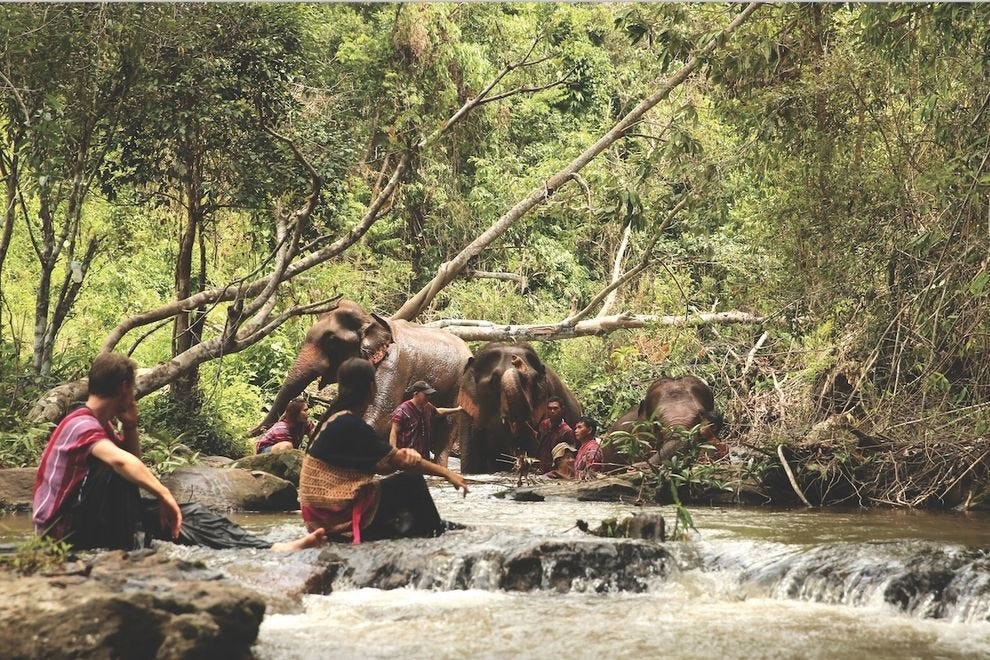
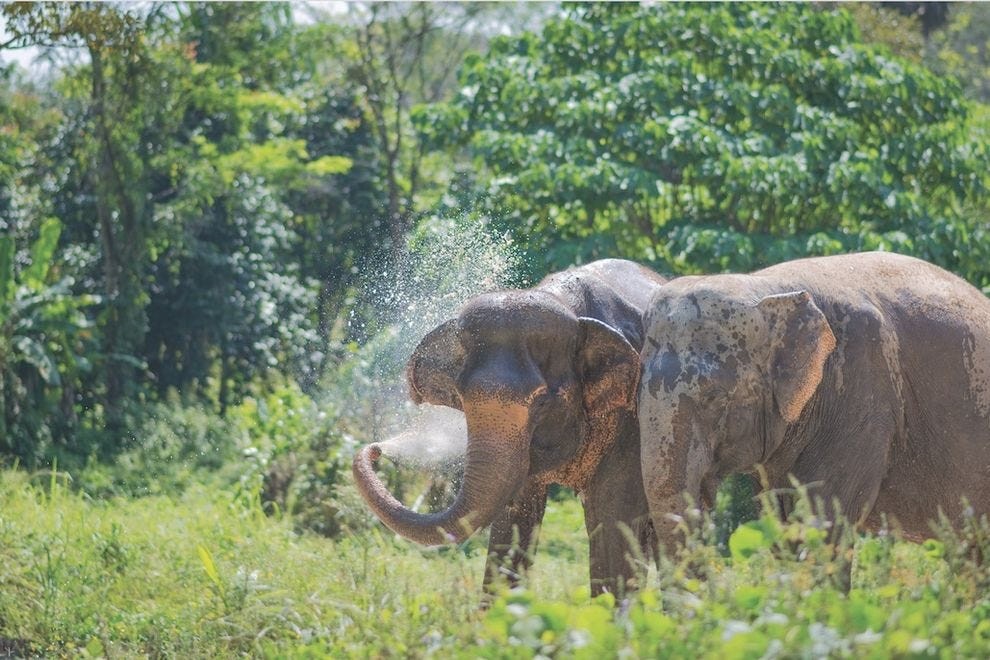
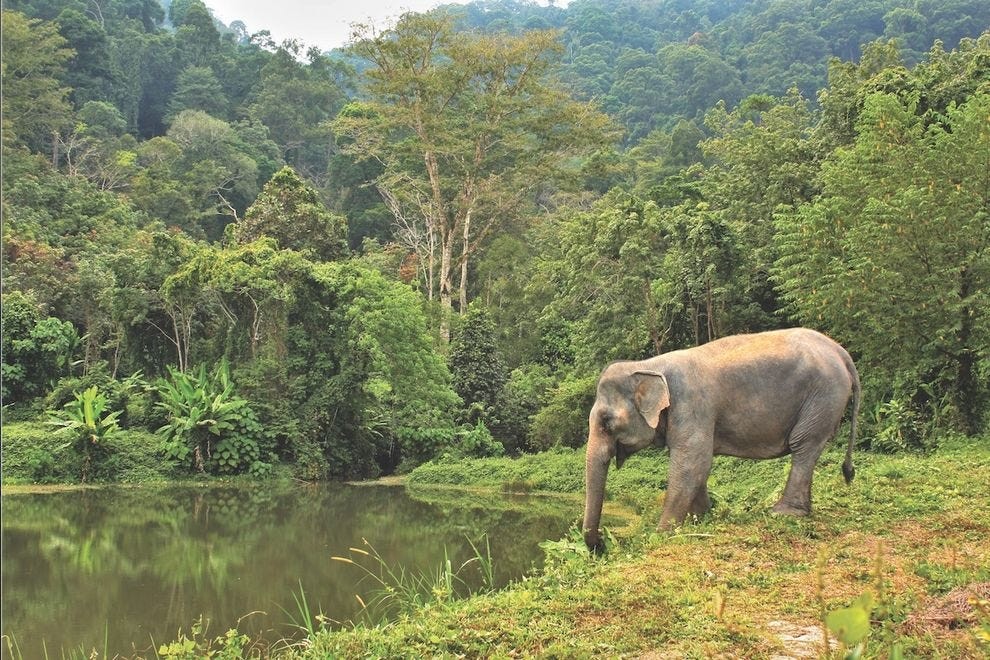
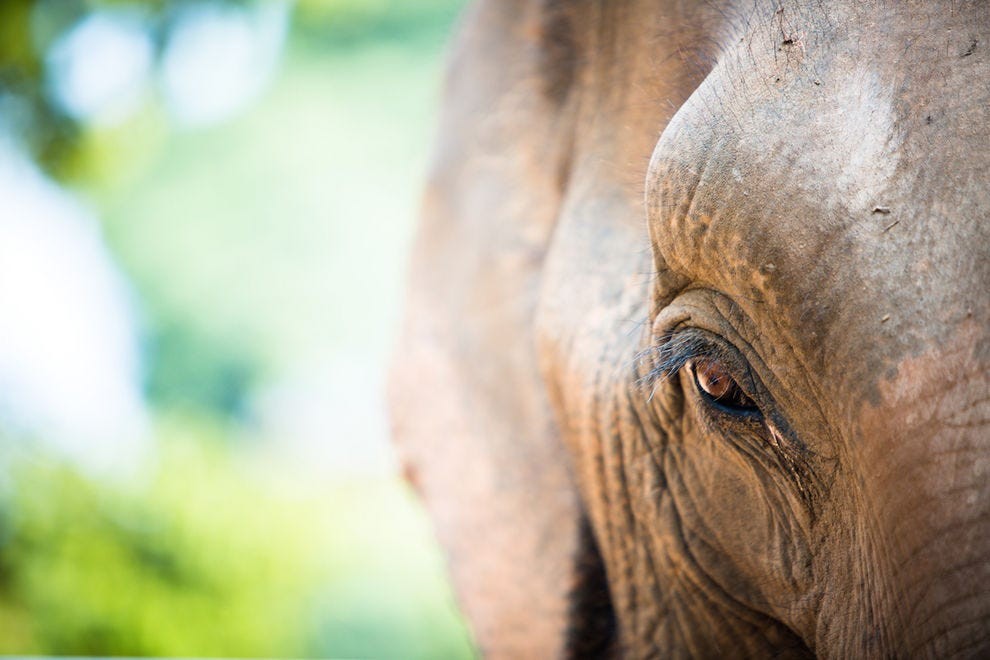
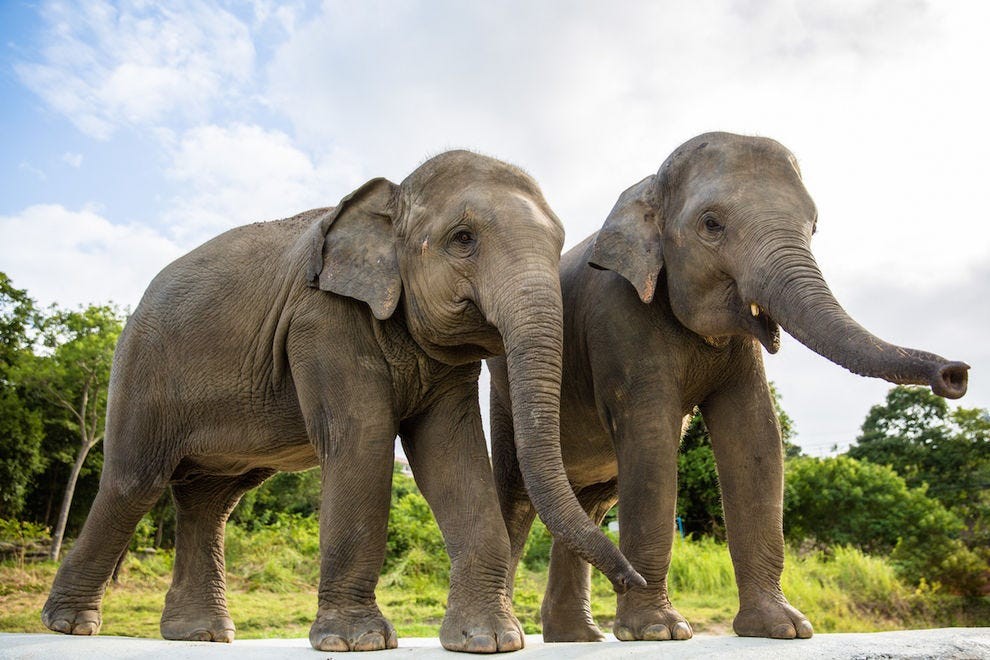



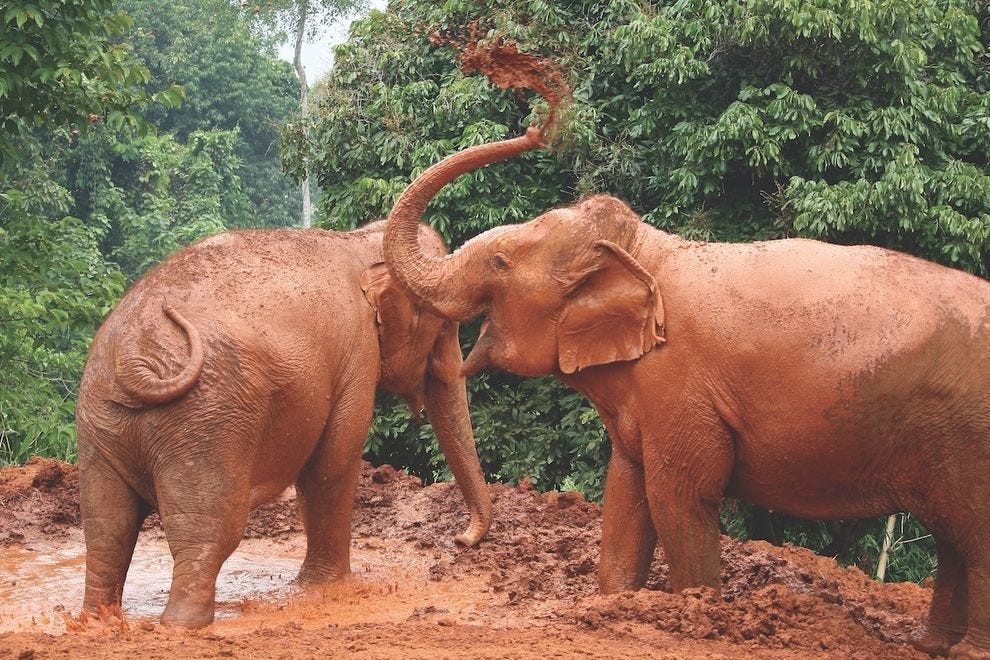
2.2. Karen Elephant Experience, Chiang Mai, Thailand
Owned and operated by Karen hill tribe members, this experience offers a unique opportunity to interact with elephants in their natural environment. The Karen people have a long history of working with elephants, and this project allows them to continue this tradition in an ethical and sustainable way.
- Activities: Meet and feed elephants, walk with them, observe their natural behaviors.
- Focus: Community-based tourism, elephant welfare, cultural exchange.
- Ethical Practices: No riding, natural environment, community involvement.
2.3. Phuket Elephant Sanctuary, Phuket, Thailand
This sanctuary provides a safe haven for rescued elephants on the island of Phuket. Visitors can learn about the elephants’ individual stories and observe them in their natural habitat.
- Activities: Observe elephants, learn about their stories, walk in the jungle.
- Focus: Rescue, rehabilitation, education.
- Ethical Practices: No riding, no performances, spacious environment.
2.3.1. “In the Footsteps of Giants” Program
Experience a day in the life of an Asian elephant by participating in this immersive program.
| Activity | Description | Learning Outcomes |
|---|---|---|
| Jungle Safari | Observe elephants foraging and interacting in their natural habitat | Understanding of elephant behavior, social dynamics, and ecological role |
| Feeding Time | Prepare and offer food to the elephants | Knowledge of elephant nutrition and dietary needs, building a connection with the animals |
| Bathing Session | Watch the elephants enjoy a refreshing bath | Observing elephant hygiene and social interaction |
2.4. Phuket Elephant Park, Phuket, Thailand
Home to a small group of rescued elephants, this park offers a more intimate experience. Visitors can feed and walk with the elephants, observing them as they roam and bathe.
- Activities: Feed elephants, walk with them, observe their natural behaviors.
- Focus: Rescue, rehabilitation, small group interactions.
- Ethical Practices: No riding, no performances, natural environment.
2.5. Samui Elephant Sanctuary, Koh Samui, Thailand
This sanctuary provides a safe and natural environment for rescued elephants on the island of Koh Samui. Visitors can spend time with the elephants, feeding them and observing their natural behaviors.
- Activities: Feed elephants, walk with them, observe their natural behaviors.
- Focus: Rescue, rehabilitation, natural environment.
- Ethical Practices: No riding, no performances, spacious environment.
2.6. Samui Elephant Haven, Koh Samui, Thailand
Sister project to Samui Elephant Sanctuary, this haven provides additional space for rescued elephants. Visitors can watch the elephants play, forage, and communicate in a natural setting.
- Activities: Observe elephants, walk with them, learn about their communication.
- Focus: Rescue, rehabilitation, spacious environment.
- Ethical Practices: No riding, no performances, natural environment.
2.7. Elephant Sanctuary Cambodia, Mondulkiri, Cambodia
Located within a vast conservation project, this sanctuary focuses on rescuing elephants from the logging industry and regenerating their natural habitat. Volunteers can help with reforestation efforts and assist in the elephants’ care.
- Activities: Volunteer, help with reforestation, assist with elephant care.
- Focus: Rescue, rehabilitation, habitat restoration, community empowerment.
- Ethical Practices: No riding, no performances, conservation focus.
2.7.1. Reforestation Efforts
Contribute to the long-term well-being of elephants by participating in habitat regeneration.
| Activity | Description | Impact |
|---|---|---|
| Tree Planting | Planting native trees to restore the jungle habitat | Provides food and shelter for elephants, improves biodiversity, combats deforestation |
| Seed Collection | Gathering seeds from native plants to propagate new trees | Ensures genetic diversity and resilience of the forest ecosystem |
| Trail Maintenance | Creating and maintaining trails for elephants to roam freely | Facilitates natural movement and foraging behavior |
2.8. Elephant Haven Thailand, Kanchanaburi, Thailand
This sanctuary provides a loving home for rescued elephants, emphasizing a “No riding. No shows. JUST LOVE!” philosophy. Visitors can spend time with the elephants, observing their natural behaviors and learning about their individual stories.
- Activities: Observe elephants, learn about their stories, participate in daily care.
- Focus: Rescue, rehabilitation, compassionate care.
- Ethical Practices: No riding, no performances, emphasis on love and respect.
2.9. Barumun Nagari Wildlife Sanctuary, North Sumatra, Indonesia
The first of its kind in Indonesia, this sanctuary provides a haven for rescued elephants from throughout the country. Visitors can observe the elephants, stay overnight, or volunteer for a week.
- Activities: Observe elephants, stay overnight, volunteer.
- Focus: Rescue, rehabilitation, establishing a model for ethical elephant care in Indonesia.
- Ethical Practices: No riding, no performances, natural environment.
2.10. Save Thai Elephant Park, Chiang Mai, Thailand
This project focuses on providing dedicated care for a small group of rescued elephants. Visitors can spend the day with the elephants, preparing food, walking with them, and watching them play and bathe.
- Activities: Prepare food, feed elephants, walk with them, observe their natural behaviors.
- Focus: Rescue, rehabilitation, personalized care.
- Ethical Practices: No riding, no performances, focus on individual elephant needs.
3. What to Expect During Your Visit
Prepare for an enriching and educational experience when you visit an ethical elephant sanctuary.
3.1. Typical Activities
Ethical elephant sanctuaries offer a variety of activities designed to promote understanding and respect for these magnificent creatures. These may include:
- Observation: Observing elephants in their natural habitat, learning about their behaviors and social dynamics.
- Feeding: Preparing and offering food to the elephants, under the guidance of trained staff.
- Walking: Walking alongside the elephants as they roam and forage in the forest.
- Bathing: Watching the elephants enjoy a refreshing bath in a river or mud pit.
- Education: Learning about elephant conservation, the challenges they face, and the importance of ethical tourism.
3.2. What to Bring
To make the most of your visit, consider bringing the following:
- Comfortable clothing and shoes: You’ll be doing a lot of walking, so wear comfortable attire and footwear.
- Sunscreen and insect repellent: Protect yourself from the sun and insects.
- Hat and sunglasses: Shield yourself from the sun.
- Water bottle: Stay hydrated throughout the day.
- Camera: Capture your unforgettable experiences.
- Respectful attitude: Remember that you are a guest in the elephants’ home.
3.3. Rules and Guidelines
Ethical elephant sanctuaries have rules and guidelines in place to ensure the safety and well-being of both the elephants and visitors. These may include:
- No riding or performances: These activities are harmful to elephants and are not permitted.
- Maintain a safe distance: Observe elephants from a respectful distance, avoiding any actions that may startle or stress them.
- Follow instructions from staff: Listen carefully to the instructions provided by the sanctuary staff.
- Respect the elephants’ space: Avoid approaching or touching elephants without permission.
- No loud noises or sudden movements: These can be disruptive to the elephants.
4. The Importance of Ethical Elephant Tourism
Choosing ethical elephant tourism makes a profound difference in the lives of these magnificent animals and contributes to their conservation.
4.1. Combating Animal Cruelty
By supporting ethical sanctuaries, you directly combat the cruelty associated with traditional elephant tourism. You send a powerful message that animal welfare matters and that abusive practices are unacceptable. Ethical sanctuaries provide a safe haven for rescued elephants, allowing them to live out their lives in peace and dignity.
4.2. Supporting Conservation Efforts
Ethical sanctuaries actively engage in elephant conservation efforts, working to protect their natural habitat and prevent poaching. They also educate local communities about the importance of elephant conservation, fostering a sense of stewardship and promoting sustainable livelihoods.
4.3. Empowering Local Communities
Many ethical elephant sanctuaries are community-based, providing employment opportunities and supporting local economies. This helps to reduce reliance on harmful practices such as logging and poaching, promoting a more sustainable and harmonious relationship between humans and elephants.
4.4. Raising Awareness
Ethical elephant tourism raises awareness about the plight of elephants and the importance of responsible tourism. By sharing your experiences with others, you can inspire them to make ethical choices and support elephant conservation.
5. How to Identify and Avoid Unethical Practices
Protecting elephants requires vigilance and the ability to recognize and avoid unethical practices.
5.1. Red Flags to Watch Out For
Be wary of establishments that exhibit the following red flags:
- Elephant rides: Riding elephants is harmful to their backs and can cause long-term health problems.
- Performing tricks: Training elephants to perform tricks often involves cruel and abusive methods.
- Use of bullhooks: Bullhooks are sharp metal hooks used to control elephants, causing pain and injury.
- Chained elephants: Keeping elephants in chains restricts their movement and prevents them from engaging in natural behaviors.
- Small enclosures: Confining elephants to small enclosures deprives them of the space they need to roam and socialize.
- Visible wounds or injuries: These may be signs of abuse or neglect.
- Stressed or aggressive behavior: This can indicate that the elephants are not being treated well.
5.2. Questions to Ask
Before visiting an elephant sanctuary, ask the following questions to assess its ethical practices:
- Do you offer elephant rides or performances? If the answer is yes, avoid the establishment.
- How do you train your elephants? Inquire about the training methods used and ensure that they are humane and ethical.
- What is the size of the elephants’ enclosure? Ensure that the elephants have ample space to roam and socialize.
- What is your policy on bullhooks? Ethical sanctuaries do not use bullhooks.
- Do you support elephant conservation efforts? Look for sanctuaries that actively contribute to conservation initiatives.
5.3. Research and Reviews
Before booking a visit, conduct thorough research and read reviews from other travelers. Look for sanctuaries with positive reviews that emphasize ethical treatment and animal welfare. Be wary of establishments with negative reviews or reports of unethical practices.
PETS.EDU.VN provides detailed information and reviews on ethical elephant sanctuaries, making it easier for you to make informed decisions and support responsible tourism.
6. The Future of Elephant Conservation
The future of elephant conservation depends on our collective efforts to promote ethical tourism, combat poaching, and protect their natural habitat.
6.1. Challenges Facing Elephants
Elephants face numerous challenges, including:
- Habitat loss: As human populations grow, elephant habitat is increasingly being converted for agriculture and development.
- Poaching: Elephants are poached for their ivory, which is used to make jewelry and other decorative items.
- Human-elephant conflict: As elephants lose their habitat, they may come into conflict with humans, damaging crops and property.
- Climate change: Climate change is exacerbating habitat loss and increasing the risk of drought and wildfires, further threatening elephant populations.
6.2. Conservation Strategies
Effective conservation strategies include:
- Protecting and restoring elephant habitat: This involves establishing protected areas, restoring degraded habitats, and creating corridors to connect fragmented populations.
- Combating poaching: This requires strengthening law enforcement, reducing demand for ivory, and working with local communities to prevent poaching.
- Mitigating human-elephant conflict: This involves implementing strategies to reduce crop raiding, such as electric fences and chili farms, and providing compensation to farmers who have lost crops to elephants.
- Promoting ethical tourism: This supports elephant welfare and raises awareness about the importance of conservation.
6.3. How You Can Help
You can contribute to elephant conservation by:
- Supporting ethical elephant sanctuaries: Choose sanctuaries that prioritize elephant welfare and contribute to conservation efforts.
- Avoiding products made from ivory: Reduce demand for ivory by refusing to purchase ivory products.
- Donating to elephant conservation organizations: Support organizations that are working to protect elephants and their habitat.
- Raising awareness: Share your experiences with others and encourage them to make ethical choices.
- Educating yourself: Learn more about elephants and the challenges they face.
7. Making a Difference: Your Role in Elephant Welfare
Every decision you make can impact the lives of elephants. By choosing ethical interactions and supporting conservation efforts, you become an advocate for their well-being.
7.1. Choosing Ethical Sanctuaries
Carefully research sanctuaries and choose those that prioritize elephant welfare. Look for sanctuaries that rescue elephants from abusive situations, provide ample space, and allow them to engage in natural behaviors.
7.2. Supporting Sustainable Tourism
Support sustainable tourism initiatives that benefit local communities and promote conservation. Choose tour operators that are committed to ethical practices and minimize their impact on the environment.
7.3. Educating Others
Share your knowledge and experiences with others. Talk to your friends and family about the importance of ethical elephant tourism and encourage them to make responsible choices.
7.4. Spreading Awareness
Use social media and other platforms to spread awareness about the plight of elephants and the importance of conservation. Share articles, photos, and videos that highlight the challenges they face and the efforts being made to protect them.
8. Personal Experiences and Testimonials
Gain insights from those who have visited ethical elephant sanctuaries.
8.1. Stories from Visitors
Read testimonials from visitors who have had meaningful experiences at ethical elephant sanctuaries. These stories highlight the transformative power of interacting with elephants in a respectful and responsible way.
8.2. Impactful Moments
Discover the moments that touched the hearts of visitors and deepened their understanding of elephants. These experiences showcase the unique bond that can form between humans and these gentle giants.
8.3. Learning and Growth
Learn how visiting an ethical elephant sanctuary can lead to personal growth and a greater appreciation for the natural world. These experiences can inspire visitors to become advocates for elephant conservation and animal welfare.
9. Practical Tips for Planning Your Trip
Ensure a smooth and meaningful experience.
9.1. Booking in Advance
Ethical elephant sanctuaries often have limited capacity, so it’s essential to book your visit in advance. This will ensure that you can secure your spot and avoid disappointment.
9.2. Transportation and Accommodation
Plan your transportation and accommodation in advance to ensure a hassle-free trip. Consider staying at eco-friendly hotels or guesthouses that support sustainable tourism.
9.3. Packing Essentials
Pack comfortable clothing, sunscreen, insect repellent, and a hat to protect yourself from the elements. Don’t forget your camera to capture your unforgettable experiences.
9.4. Respecting Local Customs
Be respectful of local customs and traditions. Dress modestly and avoid any behavior that may be considered offensive.
10. Ethical Considerations Beyond Sanctuaries
Extend your commitment to elephant welfare beyond sanctuary visits.
10.1. Supporting Conservation Organizations
Donate to reputable elephant conservation organizations that are working to protect elephants and their habitat. Your contribution can make a significant difference in their efforts.
10.2. Avoiding Ivory Products
Refuse to purchase ivory products, as this fuels poaching and threatens elephant populations. Choose alternative materials that are not derived from endangered animals.
10.3. Promoting Responsible Tourism
Promote responsible tourism by supporting businesses that are committed to ethical practices and sustainable development. Choose tour operators and hotels that prioritize animal welfare and environmental protection.
10.4. Making Informed Choices
Make informed choices about the products you consume and the activities you participate in. Support companies that are transparent about their ethical practices and committed to sustainability.
FAQ: Where To Pet An Elephant
1. What is the most ethical way to interact with elephants?
The most ethical way is to visit reputable sanctuaries where elephants roam freely, are not forced to perform, and their well-being is prioritized.
2. How can I identify an ethical elephant sanctuary?
Look for sanctuaries that do not offer rides or shows, allow natural elephant behavior, and have a clear focus on rescue and conservation.
3. Are elephant rides always unethical?
Yes, elephant rides often involve cruel training methods and can cause physical harm to the elephants.
4. What are some activities I can do at an ethical elephant sanctuary?
You can observe elephants, feed them, walk alongside them, and learn about their history and conservation.
5. How do ethical elephant sanctuaries contribute to conservation?
They rescue elephants, protect their habitat, educate communities, and promote sustainable tourism.
6. Can I volunteer at an elephant sanctuary?
Yes, many ethical sanctuaries offer volunteer programs where you can assist with elephant care and habitat restoration.
7. What should I bring when visiting an elephant sanctuary?
Bring comfortable clothing, sunscreen, insect repellent, a hat, and a respectful attitude.
8. How can I support elephant conservation efforts from home?
Donate to conservation organizations, avoid ivory products, and spread awareness about ethical tourism.
9. What questions should I ask a sanctuary to ensure they are ethical?
Ask about their training methods, whether they offer rides or shows, and how they contribute to elephant conservation.
10. Where can I find more information about ethical elephant tourism?
PETS.EDU.VN offers resources and information on ethical elephant sanctuaries and conservation efforts.
By making informed choices and supporting ethical initiatives, you can contribute to a brighter future for elephants. Remember, “where to pet an elephant” is not just a question of location, but a commitment to their well-being. Visit PETS.EDU.VN for more information and to find ethical sanctuaries near you.
Contact us:
Address: 789 Paw Lane, Petville, CA 91234, United States
Whatsapp: +1 555-987-6543
Website: pets.edu.vn
Let’s work together to protect these magnificent creatures for generations to come!
